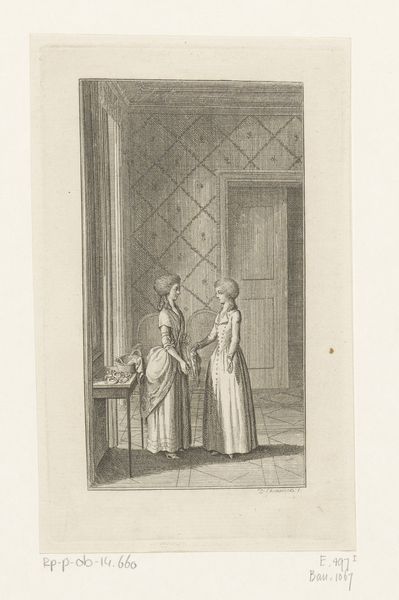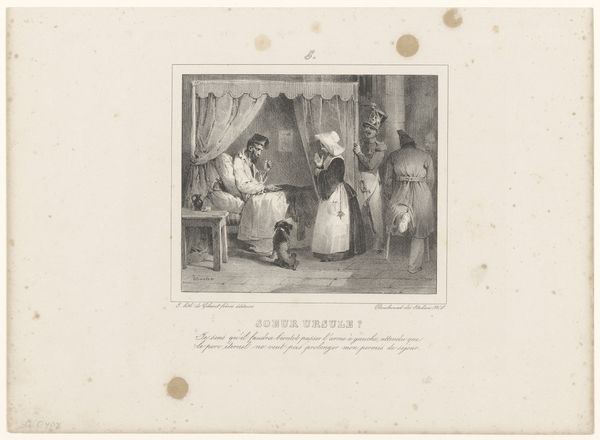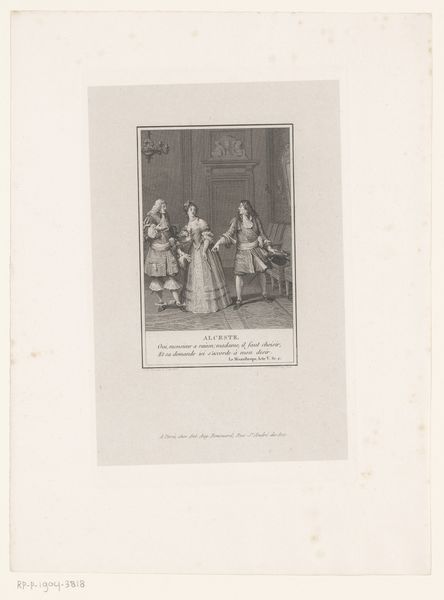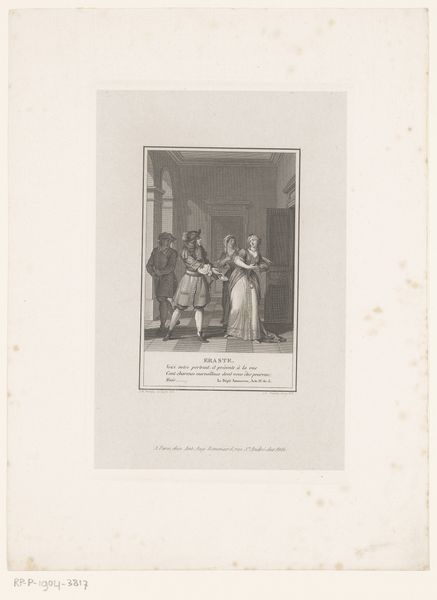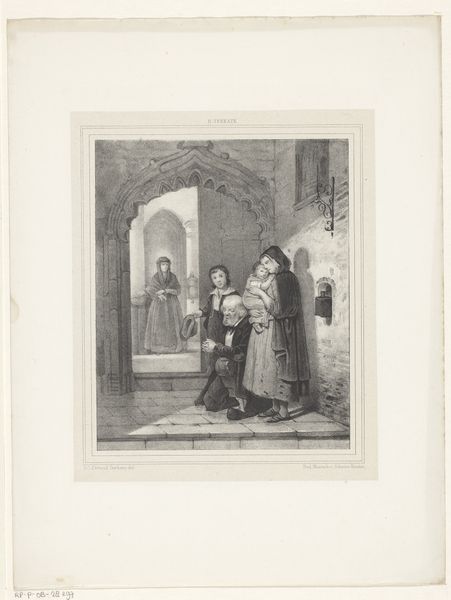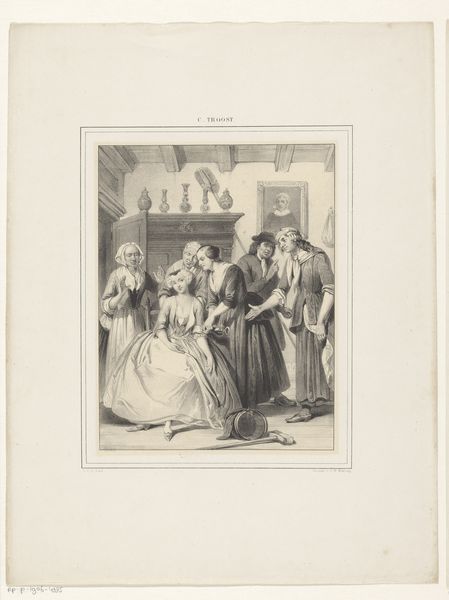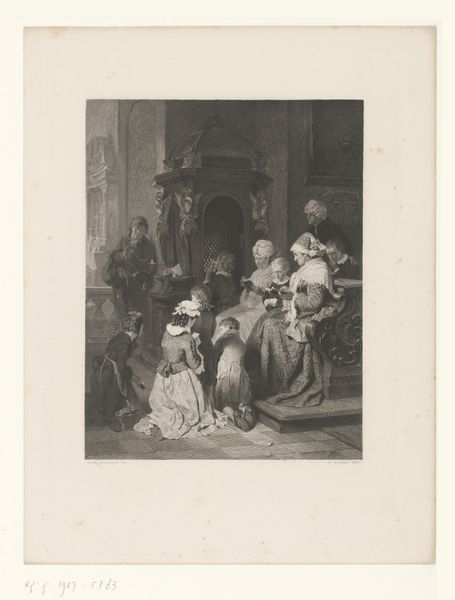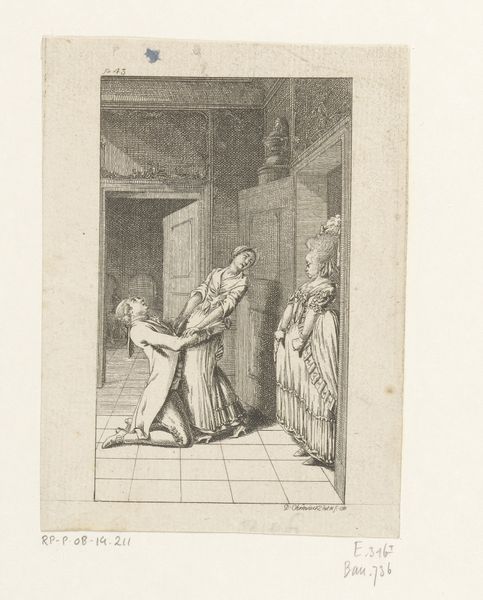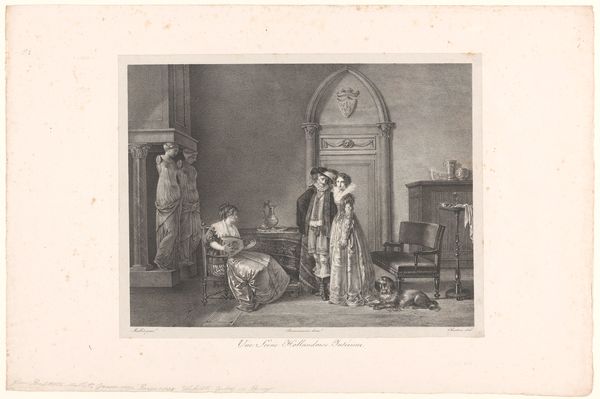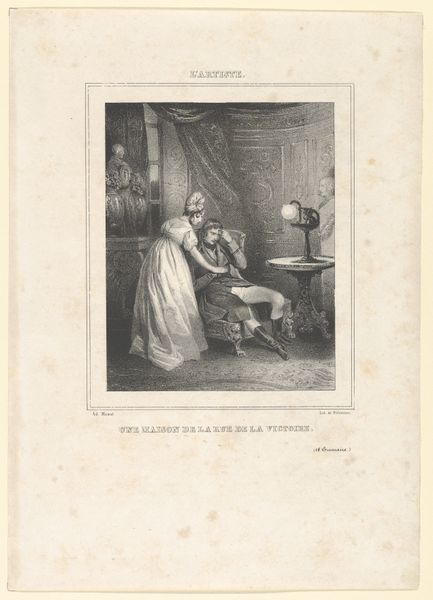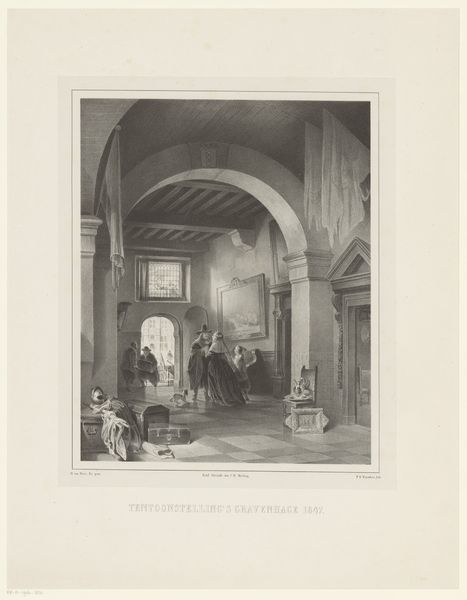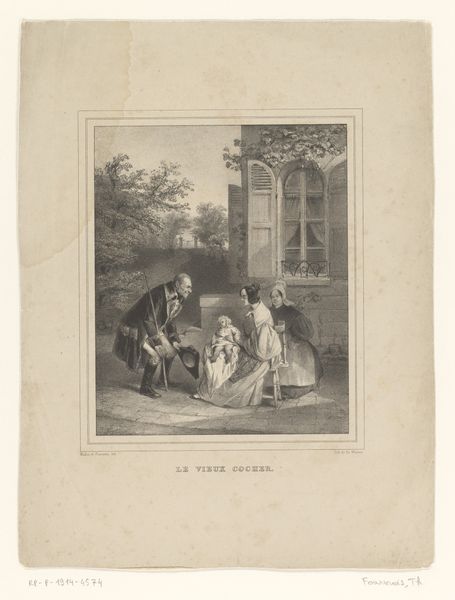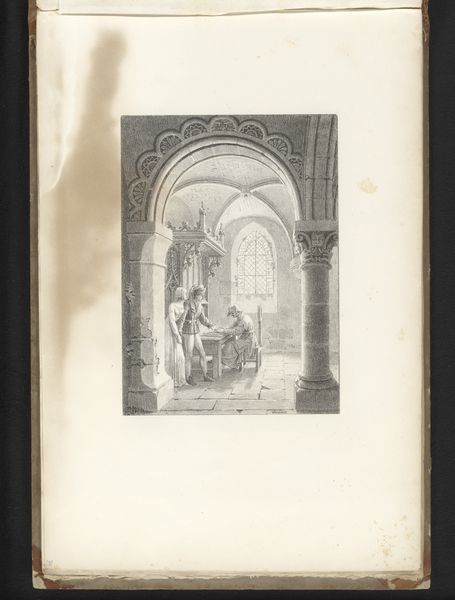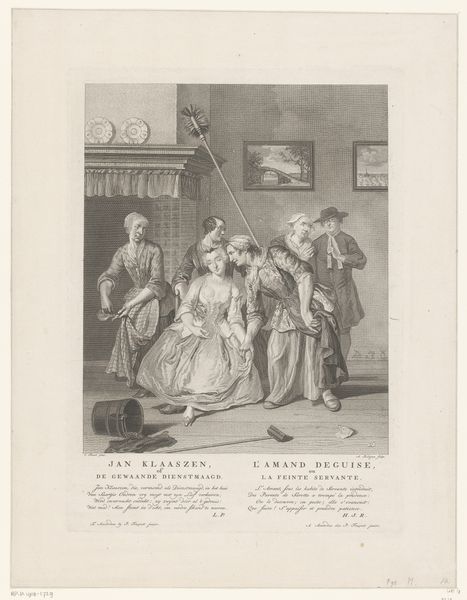
engraving
#
portrait
#
old engraving style
#
romanticism
#
genre-painting
#
history-painting
#
engraving
Dimensions: height 652 mm, width 509 mm
Copyright: Rijks Museum: Open Domain
Editor: Here we have "Biddende weesmeisjes in een kerk," or "Praying Orphan Girls in a Church," an engraving made sometime between 1820 and 1827 by Nicolas Maurin. The scene is very still, very solemn, and evokes a sense of vulnerability, I think. What can you tell me about this piece? Curator: It is quite moving, isn’t it? Beyond the surface-level representation of orphan girls, I see a potent commentary on social structures of the time, and even reflections relevant today. These girls, identifiable by their modest clothing, occupy a space usually reserved for those of higher social standing, within the church itself. How does their presence challenge the traditional hierarchy represented by the setting, would you say? Editor: I suppose it places them, at least symbolically, in a position of seeking power, or perhaps advocating for themselves within an institution that might otherwise ignore them. The setting feels almost ironic, like they’re demanding recognition in a space where they’re not inherently valued. Curator: Precisely. Consider the context of 19th-century France. The rise of industrialization created vulnerable populations, including orphaned children. This image offers a glimpse into their struggle for visibility and agency within a society undergoing significant transformation. The Romantic style further heightens the emotional weight of their plight, doesn’t it? Do you think the artist sympathized with their circumstances, or are we observing something else at play? Editor: It feels very sympathetic, but the lack of direct expression in the figures… perhaps it’s meant to be more observational, more about prompting empathy in the viewer rather than expressing an explicit opinion. Curator: Indeed. And it raises critical questions about the role of art in social reform and representation. We are confronted with uncomfortable truths about marginalization and the complex dynamics between the individual and larger systems of power. It’s a work that compels us to contemplate both past injustices and ongoing societal challenges. Editor: That’s fascinating. I'll never look at this the same way again! Curator: And hopefully that will broaden your analysis of other works in similar social-political context as well.
Comments
No comments
Be the first to comment and join the conversation on the ultimate creative platform.
